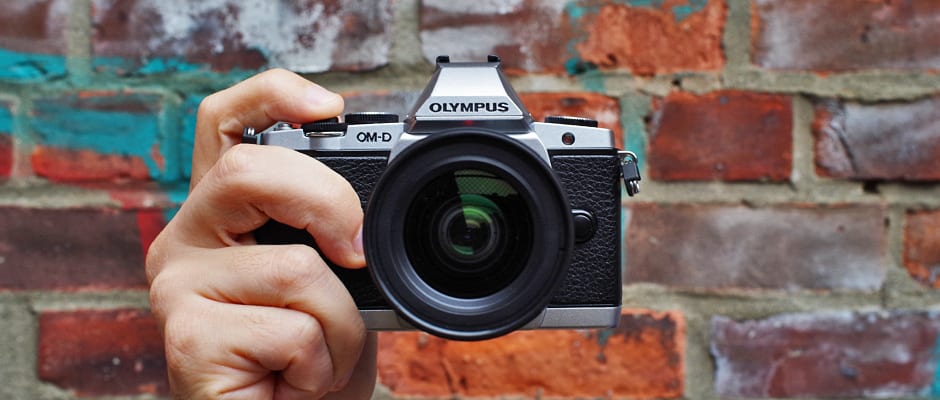Pros
Cons
Introduction
We found the camera is very similar to their flagship PEN model, the E-P3 (our mirrorless camera of the year for 2011), but with some extra features that should appeal greatly to those looking for a more professional shooting experience than you get with the PEN series. The E-M5 is dust- and splash-proof, durably built, has a great (though not removable) grip, an electronic viewfinder that lets users frame at eye-level, and a super-fast AF and 9fps burst rate. The camera ships in April for a body-only price of $999, with kit options at $1099 (14-42mm lens) and $1299 (ED 12-50mm lens) in black or silver.
Design & Appearance
{{section_header}}{{section.name}}{{/section_header}}
The OM-D EM-5 is a retro-flavored mirrorless camera styled after Olympus film rangefinders of old. It takes most of its design cues from the iconic OM-1, including a wraparound grip material, two-tone design, hanging strap anchors, and angular viewfinder housing. The EM-5 is a little different: electronic viewfinder, articulating LCD, Micro Four-Thirds digital image sensor, 1080/60i video, and all the trappings of a modern digital camera in a 1970s body.
Tour
{{section_header}}{{section.name}}{{/section_header}}




Menu
{{section_header}}{{section.name}}{{/section_header}}
In our short time with the OM-D so far, we found the menu system to be exactly like the Olympus E-P3. The main menu is arranged in tabs that are aligned vertically on the left side the screen, with symbols representing what group
Ease of Use
{{section_header}}{{section.name}}{{/section_header}}
The OM-D series is designed with the retro enthusiast in mind, especially those who want a prosumer camera in a relatively compact body. It's not for beginners, though the camera does have some controls that help advanced photographers get the shots they are looking for. Chief among these features is the dual control dial setup, which allows you to easily manipulate two settings at once. The camera also comes with two programmable function buttons, which the user can assign frequently used functions.
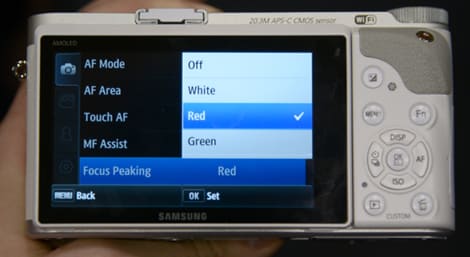

Size & Handling
{{section_header}}{{section.name}}{{/section_header}}
The E-M5 actually feels very similar to the E-P3 in hand, with some slight differences. The back of the camera has a unique curved thumbrest that bows outward from the body. This gives the thumb a perch to hold onto the camera, which provides excellent stability. It's a small touch but we noticed an instant improvement over other cameras without it.
The grip itself feels just like the E-P3, though it's not removable. It's a hard rubber, with no give. It has a textured feel to it, and it wraps all the way around the front of the body. On the right side, the grip protrudes slightly out from the body for the hand to hold onto. The one issue we had with the layout of the grip is the location of the strap anchors. When hanging down, the strap anchors tend to be right where your palm would rest, and the right one just seems to always be in the way.
Operating the camera is not difficult, and the dials all have excellent resistance levels—not too firm, not too loose—though the buttons aren't quite as nice. The OM-D EM-5 is a splash-proof camera, so most of the dials and buttons have been weather sealed. Unfortunately (or perhaps simply by Olympus' design), this has led to the all buttons except for the shutter release having a significant travel distance before the camera registers that they've been pushed. This makes menu navigation much harder than normal, as the buttons don't have the peppy responsiveness we're used to seeing. It may be a casualty of the weather sealing, but it's a noticeable downside compared to the PEN models we've reviewed.


Modes Overview
{{section_header}}{{section.name}}{{/section_header}}
The E-M5's physical mode dial has options for scene, auto, iauto, manual, program, aperture priority, and shutter priority. The scene modes include

Auto Mode
{{section_header}}{{section.name}}{{/section_header}}
As with the Olympus E-P3, the E-M5 includes a full range of automatic modes. We think the camera will appear less to novice shooters, but the camera has the tools so that anyone can pick it up and shoot. The camera includes a number of scene modes, a full as well as a program automatic and an intelligent automatic mode that sets exposure automatically.
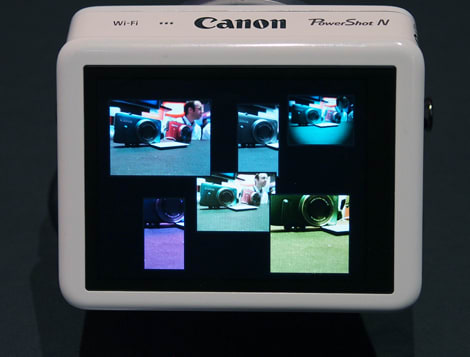
Movie Mode
{{section_header}}{{section.name}}{{/section_header}}
The E-M5 is capable of recording videos at a resolution of 1080/60i, in MPEG-4AVC/H.264 compression. Video on the E-M5 is contained in a .MOV container, which will ease uploading, playback, and editing for all users. In this format that camera can record at a bitrate of 20Mbps, or 17Mbps when space is a concern (13Mbps is resolution is lowered to 720/60i). Users can also record 720/30p in Motion JPEG if they desire, which is better if you'll need to pull stills from the video.
Drive/Burst Mode
{{section_header}}{{section.name}}{{/section_header}}
The Olympus E-M5 is capable of up to 9fps burst shooting at its fastest continuous shooting speed. If shooting RAW this speed taps out after taking 11 shots, with this upped to 17 frames if taking just JPEG images. The camera also has a slower speed of 3.5fps (4.2fps if stabilization is deactivated), which has a max of 17 RAW shots and no ceiling on JPEG capture.
Playback Mode
{{section_header}}{{section.name}}{{/section_header}}
The E-M5 offers single-frame, information display, index display, up to 14x digital zoom, video, slideshow, and slideshow with music and sound playback options. When in playback users can see a RGB or luminence histogram, photographic information, autofocus frame, and highlight and shadow warning.
Picture Quality & Size Options
{{section_header}}{{section.name}}{{/section_header}}
Users can capture images with the E-M5 as a 12-bit lossless compressed RAW, a JPEG, a JPEG+RAW shot, or as a 3D .MPO file. The camera offers 16-megapixel (4608x3456) and VGA size maximums. Users can capture the maximum size in fine or normal compression, or as a medium (2560x1920) or small (1024x768) image.
Focus
{{section_header}}{{section.name}}{{/section_header}}
When Olympus debuted the Olympus E-P3, they claimed at the time that they had achieved the world's fastest autofocus. While they've been beaten out since just last year, they're once again claiming the world's fastest AF with the OM-D E-M5. In our short time with the camera we saw nothing to disagree with that, but we won't know for sure until we test it. The E-P3 struggled in low light (most contrast autofocus systems do), so we'll be interested to see if they've improved there at all.
Exposure & Metering
{{section_header}}{{section.name}}{{/section_header}}
The E-M5 can meter in a few select modes, including spot, center-weighted, and evaluative. All three modes will determine the appropriate exposure for the scene, depending on where the camera is measuring brightness. The camera should also include the spot hi and spot shadow modes on the E-P3, though we didn't check in our short time with the camera.
ISO
{{section_header}}{{section.name}}{{/section_header}}
The E-M5 allows the user to select from ISO speeds ranging from 200-25600, though the highest settings are labeled as "extended" by the camera (same as they were on the E-P3). We're eager to see what this new 16-megapixel image sensor can do, as Olympus has been using an underwhelming 12-megapixel sensor in their Micro Four-Thirds cameras to this point.
White Balance
{{section_header}}{{section.name}}{{/section_header}}
The OM-D features the same white balance presets and procedures as the E-P3
Image Stabilization
{{section_header}}{{section.name}}{{/section_header}}
The E-M5 uses 5-axis sensor-shift image stabilization in order to combat camera shake. It can correct for yaw, pitch, vertical and horizontal shift, and rolling. Having the stabilization system built into the body of the camera will allow you to shoot a stabilized image with any lens you attach to the camera. According to Olympus' method of testing stabilization, the system allows for a maximum of 5 EV steps of compensation.
Picture Effects
{{section_header}}{{section.name}}{{/section_header}}
The E-M5 offers Olympus' range of art filters, with over 10 different types of filters that can be applied. The E-M5 will let users add the following filters to their images: pop art, soft focus, pale & light color, light tone, grainy film, pin hole, diorama, cross processing, gentle sepia, dramatic tone, and key line filters. Most of the filters also include levels of efficacy so the user can tailor the final image to their liking.
Lens Mount & Sensor
{{section_header}}{{section.name}}{{/section_header}}
The new OM-D series, of which the E-M5 is the debut body, is another derivative of Olympus' Micro Four-Thirds lens mount. Along with their PEN system cameras, the E-M5 will be able to make use of any Micro Four-Thirds lenses. Olympus is also releasing an adapter to allow the attachment of full Four-Thirds lenses, of which there are many other dust and splash proof variants.
The image sensor on the E-M5 is a 16-megapixel CMOS sensor. It should be a considerable upgrade over the 12-megapixel CMOS image sensors that have been used in previous Micro Four-Thirds cameras, as we found those sensors struggled mightily at high ISO settings. We'll have to get a functional E-M5 in our labs to get a true feel for the camera's image quality.
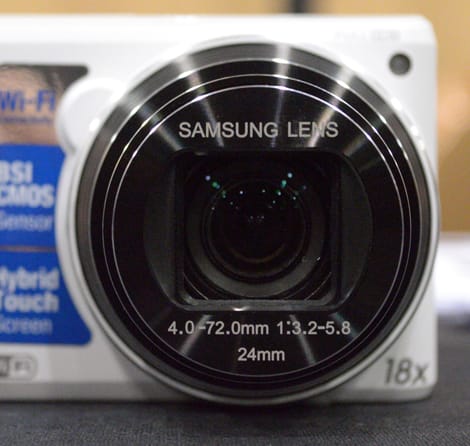

LCD & Viewfinder
{{section_header}}{{section.name}}{{/section_header}}
The Olympus E-M5 utilizes a tilting rear 3-inch touch OLED for framing purposes. It is also splash and dustproof, swinging away from the body when the user needs it. The rear screen has a resolution of approximately 610k dots, but as we saw with the Olympus E-P3, on an OLED screen that's more than enough. The viewfinder is bright and clear, and the OLED screen really makes colors pop and details stand out.

The E-M5 uses an eye-level electronic viewfinder, with a resolution of approximately 1.44 million dots. the EVF has 100% coverage with a magnification of around 0.92x of actual image size. The EVF is bright and clear, with little delay between moving the camera or making adjustments and seeing those changes relayed to the finder. Users can also adjust the viewfinder's brightness and color temperature on a scale of +/- 7 steps each, letting you tailor-fit its performance to their preference.

Flash
{{section_header}}{{section.name}}{{/section_header}}
A flash isn't built into the body of the E-M5, with Olympus instead opting to include one in the box. The bundled flash unit (FL-LM2) has a guide number of 10 meters at ISO 200, and can be fired in a number of different modes. The camera lets you use the flash automatically, with red-eye reduction, as a fill flash, as slow sync, or manually, with the camera metering through the lens. The bundled flash can also function as a wireless trigger for external flashes, letting you use more complex lighting setups.

Jacks, Ports & Plugs
{{section_header}}{{section.name}}{{/section_header}}
The Olympus E-M5 has a USB/AV/remote control input/output port, Micro-HDI, accessory port, and hot shoe built into the camera. The ports are located on the left side of the camera, behind a small flap. The flap clicks into the body somewhat, with the notch for opening it obstructed by the rear LCD. It's enough to keep the ports secure and splash-proof, as water can't easily get into the ports. That being said, the flap isn't nearly as secure as the locked doors found on most waterproof cameras, so it's important to note that this is by far the most vulnerable part of the camera.
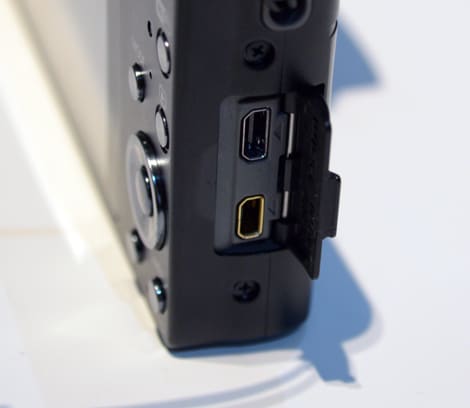
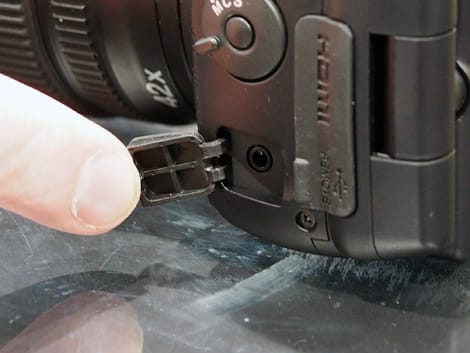
Battery
{{section_header}}{{section.name}}{{/section_header}}
The E-M5 makes use of the BLN-1 Lithium-ion battery. it's a removable, rechargeable unit and it's a new battery type, departing from the BLS-1 battery that has been used on previous Olympus PEN models. This takes away cross-compatibility with previous batteries (they seem to fit but power nothing)—and it also prevented us from getting to use the camera back at our Boston offices, with our only time with the camera coming at a previous meeting with Olympus.

Memory
{{section_header}}{{section.name}}{{/section_header}}
Unlike some other Olympus cameras, the SD card slot is not located on the bottom of the camera, but rather in a dedicated port on the side of the camera. This is especially useful if you plan to use the camera on a tripod, as you don't have to take it off any plate in order to switch cards in and out. The E-M5 can make use of SD/SDHC/SDXC memory cards, so it will work with any of the standard cards you have used for other models.

Other Hardware
{{section_header}}{{section.name}}{{/section_header}}
HLD-6 Battery Grip
Olympus is keeping the weather-sealing trend alive with the E-M5's accessories as well, announcing the HLD-6 battery grip. The grip matches the design of the camera, offering vertical-orientation shooting along with control to go along with it. As with the other parts of the E-M5, the battery grip is not waterproof—don't submerge it—but it will resist splashes and dust so if you get caught in a quick shower it shouldn't die on you.
Conclusion
The Olympus E-M5 is the first camera in Olympus' new OM-D series, going back to their roots as a compact camera maker. Splitting from the PEN line but retaining the Micro Four Thirds lens mount and image sensor, the OM-D line should appeal to advanced photographers. With an anachronistic splash- and dust-proof design, electronic viewfinder, and dual control dials, the E-M5 is meant to compete with prosumer models on their own terms.
In many ways, the E-M5 is the guts of the well-received Olympus PEN E-P3 in a very old-school body. It uses an updated 16-megapixel image sensor, but almost all the controls felt identical to their E-P3 counterparts. The E-M5 doesn't have the E-P3's OLED touchscreen, but its menu layout is practically identical to the flagship PEN camera.
As with any camera, all the control in the world doesn't matter if the camera can't perform. We only had a short time with a functional unit, but Olympus says the E-M5 is capable of 9fps burst shooting while reclaiming the title of "world's fastest autofocus."
We'll have to get the camera in for a full test first, but the E-P3 was our compact interchangeable lens camera of the year for 2011. Any improvement on that performance will see the E-M5 sitting fairly high in our standings. As with their PEN cameras, Olympus is trying to tap into more than simply a desire to have a great camera—they're going for style points, too.
If the Olympus PENs harken back to a more retro age of photography, the E-M5 is a Delorean kicked up to 88 and sent screaming back in time. Calling directly on Maitani Yoshihisa's revolutionary design of the OM-1 film camera, the E-M5 is a direct descendant of the first compact SLRs. This is a camera for those who love photography; where it's been, where it's at, and where it's going. Sure, art filters and automatic shooting are included, but this is a camera for the manual shooters. Scene modes? Ha. Where we're going, we don't need modes.
{{product.vanity}}
Sample Photos
{{section_header}}{{section.name}}{{/section_header}}
Specs
{{manufacturer_specs_table}}
Meet the tester
TJ is the former Director of Content Development at Reviewed. He is a Massachusetts native and has covered electronics, cameras, TVs, smartphones, parenting, and more for Reviewed. He is from the self-styled "Cranberry Capitol of the World," which is, in fact, a real thing.
Checking our work.
Our team is here to help you buy the best stuff and love what you own. Our writers, editors, and experts obsess over the products we cover to make sure you're confident and satisfied. Have a different opinion about something we recommend? Email us and we'll compare notes.
Shoot us an email
